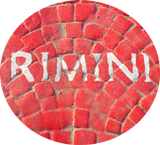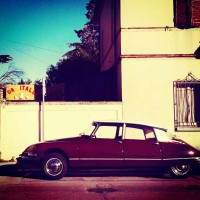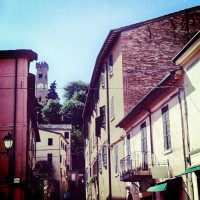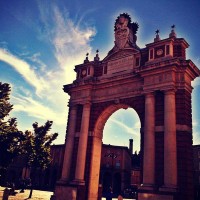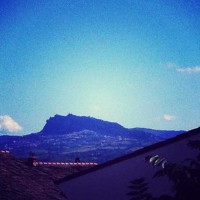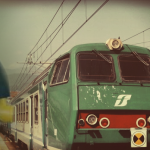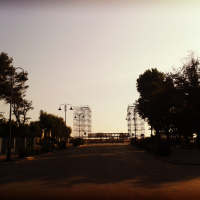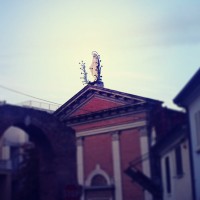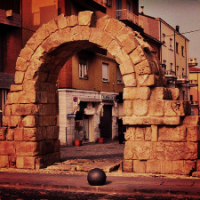Santarcangelo di Romagna
Santarcangelo di Romagna, just 15 minutes away from Rimini’s centro storico, is a breathtakingly beautiful small town, full of history, charm, culture and wonderful restaurants and bars. At the gateway to the Val Marecchia, its proximity to Rimini is an advantage, but also sadly sometimes means it gets overlooked by tourists to Rimini who plan longer trips inland to the likes of San Leo, San Marino and Verucchio; we think Santarcangelo is one of the real gems of the Romagna, and its proximity to Rimini means that it’s a must see for any visitor, and here we’ll try to tell you why.
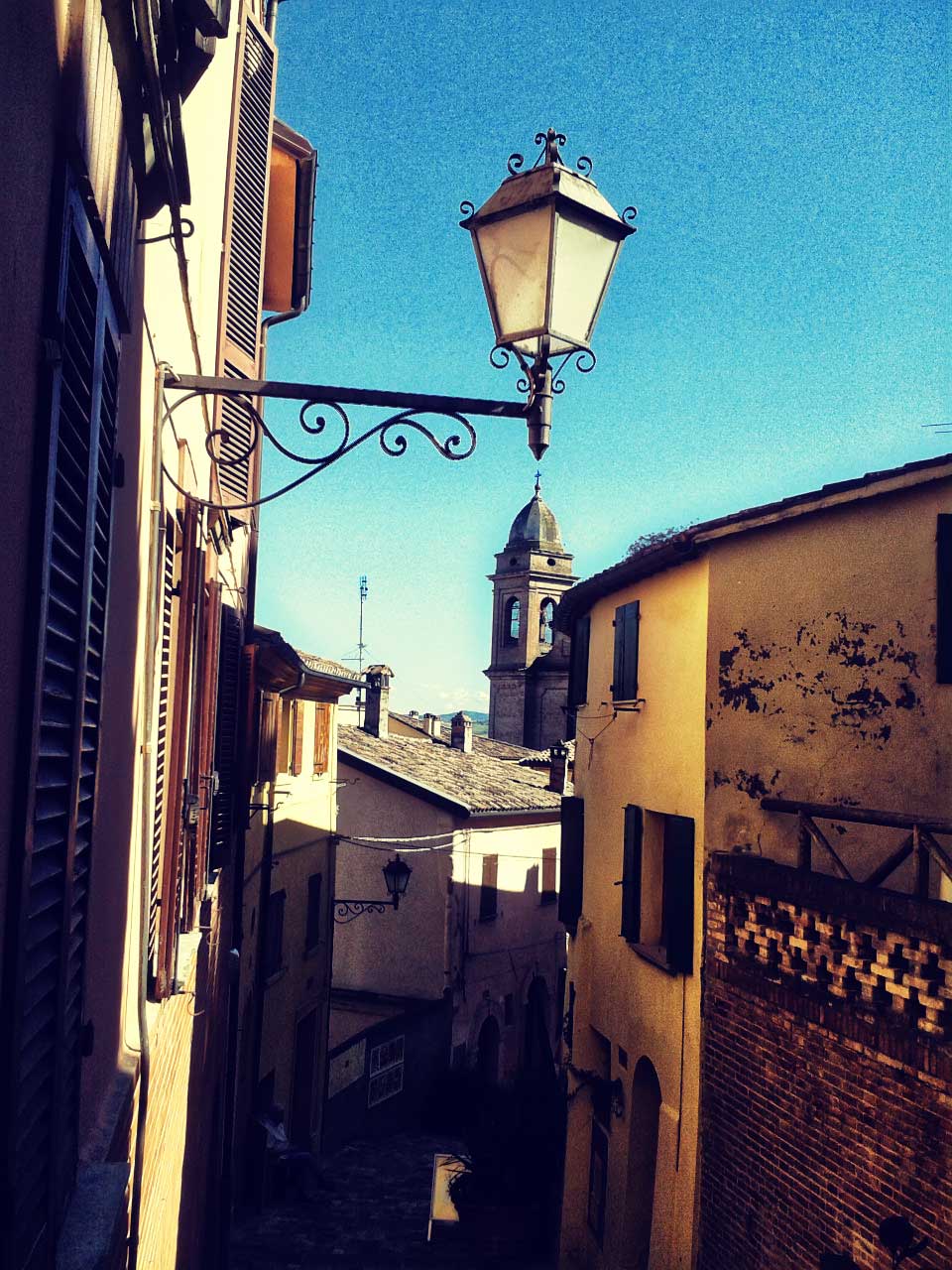
Santarcangelo’s History – a quick guide
The modern town is still dominated by the picturesque medieval fortified village atop of Mt. Giove (also known, more realistically as the colle Giove or hill of Jupiter. The walled town, with its impressive fortress – the Rocca Malatestiana, its pretty piazze and the old clocktower, gives the city character, but the town’s origins date back to Roman times, in and around the same time as the founding of Roman Rimini (ariminum). Mt Giove, situated near the Marecchia river, with its gentle slopes and grotto-like-caves made it a useful and strategic place for a town, and it has been inhabited continuously since.
In the middle ages the town came under control of the Malatesta family in Rimini, and with their subsequent downfall it was incorporated, after a brief spell under Venetian control, into the Papal states. The town also provided the Church with a Pope, Pope Clement XIV (Giovanni Vincenzo Antonio Ganganelli), most famous, perhaps, for his controversial suppresion of the Jesuit order (though he himself had been educated by the Jesuits in Rimini). The Catholic encyclopedia wrote of Clement XIV: “Pope has better merited the title of a virtuous man, or has given a more perfect example of integrity, unselfishness, and aversion to nepotism. Notwithstanding his monastic education, he proved himself a statesman, a scholar, an amateur of physical science, and an accomplished man of the world.”
In 1828 Pope Leo XII conferred the title of city on Santarcangelo di Romagna. The city was bombed heavily during the second world war, but the caves that abound under the city provided shelter for the townspeople and people of the surrounding area. The town today has various plaques to commemorate the local partisans who fought against the Nazi-Fascist occupation.
In 1971 the town held its first international theatre festival – which is held annually and is one of the most important festivals of its kind. In 1984 the city was officially given the title of a city of art (Cittá d’arte).
5 Things to see in Santarcangelo di Romagna
The Rocca Malatesta – This mighty medieval fortress, built by the Malatesta lords of Rimini in 1447 dominates the town’s skyline and is an impressive example of the defensive castles that dot this region. The Castle has one main tower, which originally was much higher, but was deemed of more value aesthetically than for defensive purposes by Sigismondo Malatesta; he had it reduced and used the stone recouped for defensive walls. The castle today is private property which can be visited only on the first saturday and sunday of the month. Group visits outside these times can be arranged though, so it’s worth enquiring via the tourist office.
The Grottos of Santarcangelo – dotted underneath the city is a network of catacombs and caves, some naturally occuring, with others man made. There are various theories as to their original use – ranging from pagan places of worship, and burial chambers, through to places for storing wine and food in pre-refrigeration days. Some of the grottos can be visited, Grotta Pubblica – Via Ruggeri, Grotta Teodorani – Piazza Balacchi, abd Grotta Stacchini – Piazzetta delle Monache
The Torre del Campanone or Torre Civica – this bell tower, which can be seen above the town from almost every angle, is 25 meters high and was erected in 1893. It’s built in a neo-gothic style and has an iron wind-gable in the shape of the archangel Michael. Unfortunately you can’t enter the tower, but a trip up to the top of the town to see its base is well worth it.
The Museo del Bottone or Button museum – Italians are great collectors, and so it’s no surprise that you’ll find a wonderfully quirky collection in the Button Museum of Santarcangelo di Romagna – a selection of up to 5000 buttons from the collection of local man Giorgio Gallavotti (the display is only about 60% of the total collection). It gives a strange and enchanting view into history, with the majority of the buttons coming from the 1900’s to the present day, from all over Italy.
The Capuchin Convent – legend has it that the mighty Sangiovese grape got its name from this very convent. THe story goes that a visitor to the monastery, drinking some of the friars’ own wine remarked how good it was, and asked the name of the wine. The friars, momentarily embarrassed as they had never thought to name it, came up with a name on the spot – sanguis jovis because of the location on Mt Giove. The rest, as they say, is history. Nowadays you can visit the tranquil convent, where mass is celebrated daily – keeping in mind that it’s a still functioning religious institution.
Where to Stay in Santarcangelo
For a full list of hotels in and around Santarcangelo you can check our selection here
For a four star hotel in the old part of the town, try il Villino
For a B&B you can try La Combriccola a bit out from the medieval town, but well recommended and with free wi-fi and bicycles available.
When to visit Santarcangelo
Any time of the year can be good, but in terms of annual festivals there are:
The Theatre Festival in July
The feast of San Michele – dedicated to animals – is the city’s main holiday – 29th of September
The Citroen Squalo – Italian Style
You'll see plenty of flash cars around Rimini, and Emilia-Romagna in general - with an obvious marke...
Read the full storySantarcangelo’s bell tower
Santarcangelo's bell tower - the Torre Civica or Torre del Campanone is a neo-gothic symbol of the c...
Read the full storyArco di Clemente XIV – PIazza Ganganelli, Santarcangelo di Romagna
The beautiful arch dedicated to Pope Clement XIV, a native son of Santarcangelo di Romagna, frames t...
Read the full storySan Marino, viewed from Santarcangelo
Head inland from Rimini on a summer's day and you'll find great views and amazing towns. Here, from ...
Read the full storyClassic cars on the street – the Fiat 500
The Fiat 500, or Cinquecento as it’s known, is much more than just a car. It’s a piece o...
Read the full story
